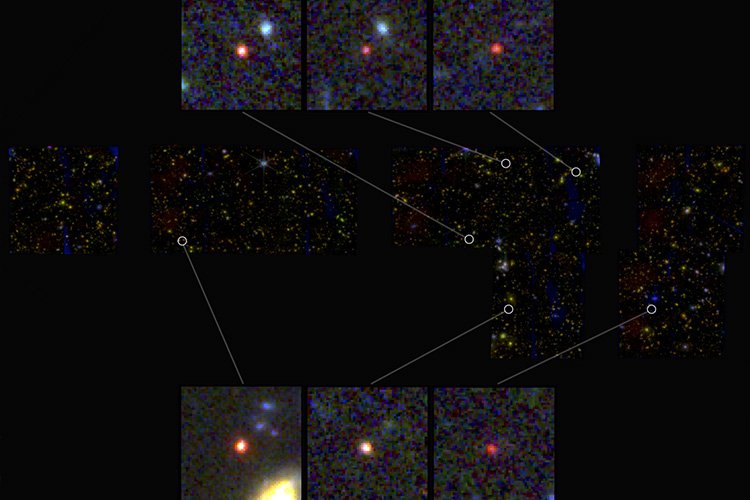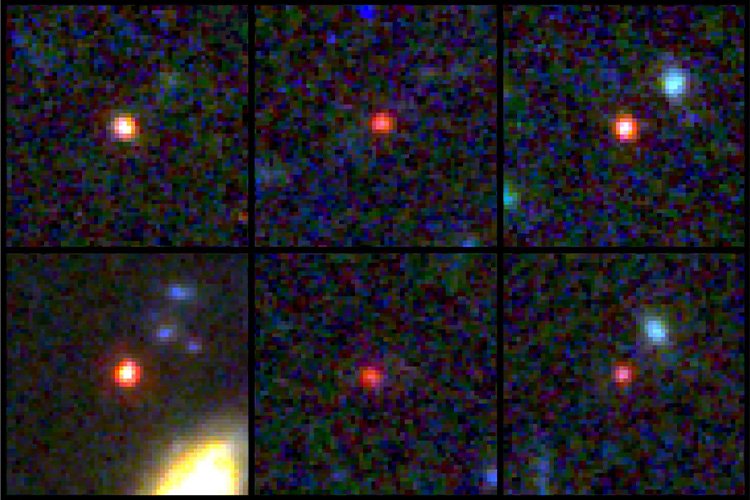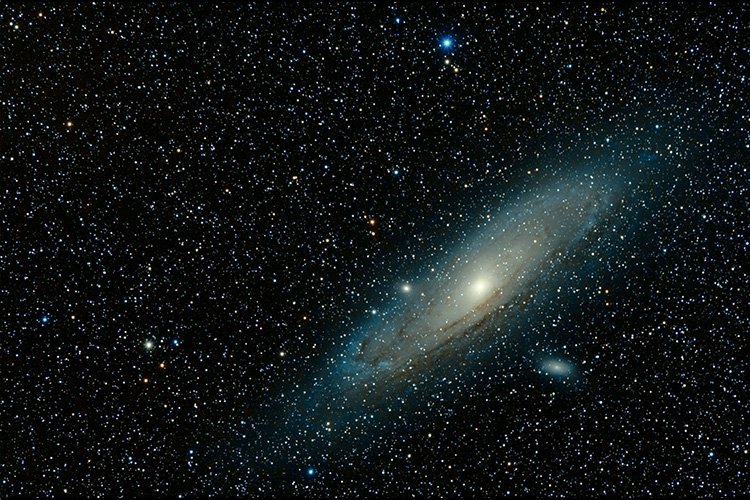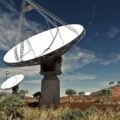In a new study, an international team of astrophysicists studying images captured by NASA’s James Webb Space Telescope have discovered six massive potential galaxies that could upend our understanding of the universe.
The candidate galaxies are believed to have formed at the dawn of the universe, roughly 13 billion years ago, or 500 to 700 million years after the Big Bang.
In this region of early space, astronomers expected to find small newly forming galaxies. However, the Webb Space Telescope images suggest the star systems could contain almost as many stars as the modern-day Milky Way Galaxy.
“These objects are way more massive than anyone expected,” said Joel Leja, assistant professor of astronomy and astrophysics at Penn State, who modeled light from these galaxies. “We expected only to find tiny, young, baby galaxies at this point in time, but we’ve discovered galaxies as mature as our own in what was previously understood to be the dawn of the universe.”


NASA’s James Webb Space Telescope, launched in December 2021, is equipped with infrared sensors that can detect light emitted by the oldest stars and galaxies, allowing scientists to see back roughly 13.5 billion years to the beginning of the known universe.
Using data collected by James Webb, scientists previously identified several galaxies in the oldest regions of the universe, an area formed approximately 350 million years after the Big Bang. These distant star systems were relatively small and consistent with what would be expected based on current cosmological models.
However, the recent discovery of six massive mature galaxies in this same general region of the early universe could upend modern cosmological theory and alter what many have long considered settled science.
“It’s bananas,” said Erica Nelson, co-author of the new research and assistant professor of astrophysics at the University of Colorado Boulder. “You just don’t expect the early universe to be able to organize itself that quickly. These galaxies should not have had time to form.”
The recent findings stem from Jame Webb’s Cosmic Evolution Early Release Science (CEERS) Survey, in a region of space close to the Big Dipper, first observed by the Hubble Space Telescope in the 1990s.
The galaxy candidates are so unexpected they conflict with 99% of cosmology models. Current calculations suggest there shouldn’t have been enough matter to form extensive star systems 500 to 700 million years after the Big Bang.
According to researchers, accounting for the observed mass of these galaxies requires changing current cosmological models or revising the scientific understanding of how galaxies were formed in the early universe. “Either scenario requires a fundamental shift in our understanding of how the universe came to be,” Leja explained.
“We looked into the very early universe for the first time and had no idea what we were going to find,” said Leja. “It turns out we found something so unexpected it actually creates problems for science. It calls the whole picture of early galaxy formation into question.”
“We’ve been informally calling these objects’ universe breakers’ — and they have been living up to their name so far.”


Researchers caution that more data is needed to fully confirm that the galaxy candidates are as large and as old as they appear.
“This is our first glimpse back this far, so it’s important that we keep an open mind about what we are seeing,” Leja said. “While the data indicates they are likely galaxies, I think there is a real possibility that a few of these objects turn out to be obscured supermassive black holes.”
“Regardless, the amount of mass we discovered means that the known mass in stars at this period of our universe is up to 100 times greater than we had previously thought. Even if we cut the sample in half, this is still an astounding change.”
The objects could eventually turn out not to be galaxies at all. “Another possibility is that these things are different kinds of weird objects, such as faint quasars, which would be just as interesting,” said Nelson. “If even one of these galaxies is real, it will push against the limits of our understanding of cosmology.”
The preliminary observations offer a persuasive glimpse at how the James Webb Space Telescope could ultimately rewrite our understanding of the universe.
Nelson says the fast pace of discoveries being made with James Webb is similar to the early days of the Hubble telescope. Launched into low Earth orbit in 1990, the Hubble telescope began to quickly paint a much more complex picture of the early universe than researchers had initially considered.
Just over a year in operation, the James Webb Space Telescope is the largest infrared space telescope, designed to capture high-resolution images of objects too distant or faint for Hubble.
“Even though we learned our lesson already from Hubble, we still didn’t expect James Webb to see such mature galaxies existing so far back in time,” said Nelson. “I’m so excited.”
The researcher’s findings were recently published in the journal Nature.
Tim McMillan is a retired law enforcement executive, investigative reporter and co-founder of The Debrief. His writing typically focuses on defense, national security, the Intelligence Community and topics related to psychology. You can follow Tim on Twitter: @LtTimMcMillan. Tim can be reached by email: tim@thedebrief.org or through encrypted email: LtTimMcMillan@protonmail.com

